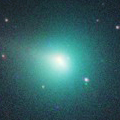
|
Now it is bright as 9.7 mag (Mar. 6, Marco Goiato). It stays bright as 9-10 mag until March. In the Northern Hemisphere, it stays observable in excellent condition for a long time. In the Southern Hemisphere, it stays extremely low after this.
Date(TT) R.A. (2000) Decl. Delta r Elong. m1 Best Time(A, h)
Mar. 12 3 14.82 28 29.0 1.508 1.383 63 9.9 19:28 ( 97, 45)
Mar. 19 3 37.84 31 45.5 1.567 1.413 62 10.2 19:34 (103, 44)
|
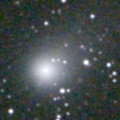
|
Now it is 9.9 mag (Mar. 9, Osamu Miyazaki). In the Northern Hemisphere, it will be getting lower after this, and it will be unobservable in May. In the Southern Hemisphere, it stays observable until July.
Date(TT) R.A. (2000) Decl. Delta r Elong. m1 Best Time(A, h)
Mar. 12 6 35.26 19 34.1 3.177 3.598 107 10.4 19:28 ( 11, 74)
Mar. 19 6 37.05 18 29.5 3.289 3.609 100 10.4 19:34 ( 33, 71)
|
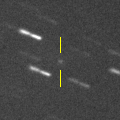
|
Brightened very rapidly. Now it is very bright as 10.0 mag (Mar. 9, Michael Jager). It stays 10-11 mag until spring. In the Northern Hemisphere, it is observable only until early March. In the Southern Hemisphere, it is not observable until late May. But it will be observable in good condition after that.
Date(TT) R.A. (2000) Decl. Delta r Elong. m1 Best Time(A, h)
Mar. 12 23 38.47 38 26.0 1.600 1.089 42 10.5 19:28 (130, 10)
Mar. 19 0 8.54 34 30.0 1.684 1.047 35 10.4 19:34 (128, 7)
|
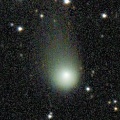
|
Now it is bright as 11.0 mag (Mar. 6, Osamu Miyazaki). The brightness evolution is slower than originally expected. It is expected to be observable at 7 mag for a long time from 2022 to 2023. In the Northern Hemisphere, it stays observable in good condition until autumn. However, it is not observable at the high light from autumn to 2023 summer. In the Southern Hemisphere, it stays observable in good condition after this.
Date(TT) R.A. (2000) Decl. Delta r Elong. m1 Best Time(A, h)
Mar. 12 18 47.10 11 22.0 3.965 3.764 71 10.9 4:51 (293, 47)
Mar. 19 18 50.14 11 26.3 3.811 3.701 76 10.7 4:41 (297, 50)
|
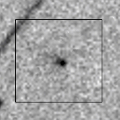
|
Now it is 12.0 mag (Feb. 23, Thomas Lehmann). In the Northern Hemisphere, it stays extremely low until spring. In the Southern Hemisphere, it stays observable at 11 mag until June.
Date(TT) R.A. (2000) Decl. Delta r Elong. m1 Best Time(A, h)
Mar. 12 20 34.92 -17 23.9 2.099 1.554 44 10.9 4:51 (298, 8)
Mar. 19 20 56.67 -16 13.8 2.068 1.552 46 10.9 4:41 (296, 8)
|
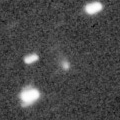
|
It brightened up to 15.1 mag in February (Feb. 1, Ken-ichi Kadota). Now it is not observable. It is expected to brighten up to 4.5 mag in April. However, it is not observable at the high light. In the Northern Hemisphere, it will appear at 6 mag in mid May, and it stays observable in good condition after that while the comet will be fading. In the Southern Hemisphere, it is not observable until August.
Date(TT) R.A. (2000) Decl. Delta r Elong. m1 Best Time(A, h)
Mar. 12 0 5.48 -0 30.5 2.038 1.074 10 11.9 19:28 ( 96, -9)
Mar. 19 0 24.42 -0 41.9 1.906 0.930 7 11.1 19:34 ( 98,-12)
|
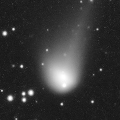
|
Now it is bright as 11.8 mag (Mar. 7, Marco Goiato). It will brighten up to 11.5 mag in spring. It stas observable in good condition for a long time. In the Northern Hemisphere, it stays somewhat low until spring.
Date(TT) R.A. (2000) Decl. Delta r Elong. m1 Best Time(A, h)
Mar. 12 11 59.34 -25 22.8 3.417 4.307 150 11.6 0:43 ( 0, 29)
Mar. 19 11 56.53 -24 7.5 3.374 4.297 155 11.5 0:13 ( 0, 31)
|
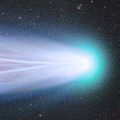
|
It brightened up to 3 mag from mid December to late December. Now it is fading. It has already faded down to 11.0 mag (Feb. 23, Martin Masek). In the Northern Hemisphere, it will become observable again at 13 mag in late April.
Date(TT) R.A. (2000) Decl. Delta r Elong. m1 Best Time(A, h)
Mar. 12 21 18.06 -34 51.4 2.013 1.459 43 11.7 4:51 (305,-10)
Mar. 19 21 13.92 -34 57.6 2.000 1.565 50 12.0 4:41 (308, -7)
|
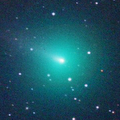
|
It brightened very rapidly up to 9.2 mag in winter (Jan. 31, Chris Wyatt). Now it is fading. But it is still bright as 11.3 mag (Mar. 9, Osamu Miyazaki). It will be fainter than 18 mag in May.
Date(TT) R.A. (2000) Decl. Delta r Elong. m1 Best Time(A, h)
Mar. 12 5 37.03 14 28.8 0.824 1.327 93 11.7 19:28 ( 41, 64)
Mar. 19 6 7.34 15 10.7 0.892 1.379 93 12.4 19:34 ( 44, 64)
|
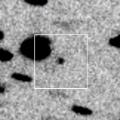
|
Now it is 14.7 mag (Feb. 3, Giuseppe Pappa). It stays 12-13 mag for a while. But actually, it is fainter than this ephemeris recently. It is observable in excellent condition in the Southern Hemisphere. It locates low until May in the Northern Hemisphere.
Date(TT) R.A. (2000) Decl. Delta r Elong. m1 Best Time(A, h)
Mar. 12 19 16.49 -22 54.2 1.707 1.546 63 12.1 4:51 (315, 17)
Mar. 19 19 38.32 -22 54.8 1.670 1.550 65 12.1 4:41 (314, 16)
|
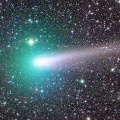
|
It brightened up to 8.5 mag from autumn to winter (Dec. 2, Toshihiko Ikemura, Hirohisa Sato). Now it is fading. It has already faded down to 11.8 mag (Mar. 9, Osamu Miyazaki). It stays observable in good condition for a long time. It locates somewhat low in the Southern Hemisphere,
Date(TT) R.A. (2000) Decl. Delta r Elong. m1 Best Time(A, h)
Mar. 12 8 27.77 25 35.7 1.124 1.933 131 12.7 21:08 ( 0, 80)
Mar. 19 8 32.22 24 50.2 1.233 1.988 125 13.1 20:45 ( 0, 80)
|
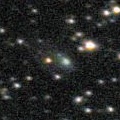
|
Now it is 14.9 mag (Nov. 28, Thomas Lehmann). It is expected to brighten up to 11 mag from spring to summer. In the Southen Hemisphere, it stays observable in good condition for a long time after this. In the Northern Hemisphere, it is hardly observable after this.
Date(TT) R.A. (2000) Decl. Delta r Elong. m1 Best Time(A, h)
Mar. 12 20 26.30 -20 0.0 2.675 2.126 47 13.4 4:51 (301, 8)
Mar. 19 20 34.05 -21 53.0 2.526 2.080 52 13.2 4:41 (304, 8)
|

|
Now it is 15.7 mag (Feb. 21, P. Camilleri, J. Oey, R. Groom, A. Pearce). It was expected to brighten up to 13 mag in spring. But actually, it is fainter than this ephemeris recently. In the Southern Hemisphere, it stays observable in good condition for a long time. In the Northern Hemisphere, it is not observable until autumn.
Date(TT) R.A. (2000) Decl. Delta r Elong. m1 Best Time(A, h)
Mar. 12 8 29.49 -69 5.4 2.928 3.272 101 13.5 21:06 ( 0,-14)
Mar. 19 7 54.60 -67 13.6 2.920 3.253 100 13.4 20:04 ( 0,-12)
|
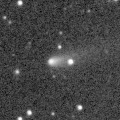
|
Now it is 12.7 mag (Feb. 27, Jose Guilherme de S. Aguiar). It is observable at 13 mag in good condition until spring.
Date(TT) R.A. (2000) Decl. Delta r Elong. m1 Best Time(A, h)
Mar. 12 9 29.53 19 28.2 1.470 2.367 147 13.7 22:09 ( 0, 74)
Mar. 19 9 26.54 19 25.5 1.502 2.350 139 13.7 21:39 ( 0, 74)
|

|
Now it is bright as 12.7 mag (Feb. 27, Toshihiko Ikemura, Hirohisa Sato). It is observable until April in the Southern Hemisphere, or until May in the Northern Hemisphere.
Date(TT) R.A. (2000) Decl. Delta r Elong. m1 Best Time(A, h)
Mar. 12 4 24.84 29 9.4 6.089 5.966 78 13.7 19:28 ( 89, 59)
Mar. 19 4 28.28 29 6.1 6.199 5.968 72 13.8 19:34 ( 93, 53)
|
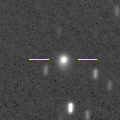
|
Now it is 13.4 mag (Feb. 28, Toshihiko Ikemura, Hirohisa Sato). It is expected to brighten up to 10 mag in 2023. In the Northern Hemisphere, it stays observable in good condition until 2023 autumn. In the Southern Hemipshere, it stays unobservable until 2023 summer.
Date(TT) R.A. (2000) Decl. Delta r Elong. m1 Best Time(A, h)
Mar. 12 12 10.63 58 10.9 4.297 4.930 124 14.1 0:55 (180, 67)
Mar. 19 11 56.57 59 23.7 4.280 4.873 121 14.0 0:13 (180, 66)
|
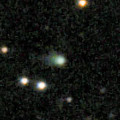
|
Now it is 14.1 mag (Mar. 2, Toshihiko Ikemura, Hirohisa Sato). It is expected to brighten up to 11 mag in 2023. In the Northern Hemisphere, it stays observable in good condition for a long time. In the Southern Hemisphere, it locates extremely low in 2022, but it will be observable in good condition in 2023.
Date(TT) R.A. (2000) Decl. Delta r Elong. m1 Best Time(A, h)
Mar. 12 16 32.51 37 48.8 4.621 4.940 102 14.2 4:51 (239, 84)
Mar. 19 16 27.14 38 53.0 4.516 4.901 107 14.1 4:41 (183, 86)
|

|
It brightened up to 12.3 mag from spring to summer (June 15, Marco Goiato). Now it is fading. It has already faded down to 14.7 mag (Feb. 27, Toshihiko Ikemura, Hirohisa Sato).
Date(TT) R.A. (2000) Decl. Delta r Elong. m1 Best Time(A, h)
Mar. 12 13 50.38 21 4.0 3.676 4.493 141 14.1 2:34 ( 0, 76)
Mar. 19 13 41.25 22 58.3 3.677 4.533 145 14.2 1:57 ( 0, 78)
|

|
Now it is 15.3 mag (Feb. 23, Thomas Lehmann). It will brighten up to 13 mag in summer.
Date(TT) R.A. (2000) Decl. Delta r Elong. m1 Best Time(A, h)
Mar. 12 18 24.32 -26 1.3 3.188 3.095 75 14.4 4:51 (327, 21)
Mar. 19 18 32.53 -26 12.9 3.088 3.089 80 14.3 4:41 (329, 22)
|

|
Now it is 15.7 mag (Feb. 2, Thomas Lehmann). It will brighten up to 12.5 mag in summer. In the Southern Hemisphere, it stays observable in excellent condition for a long time, although it became low temporarily in February. In the Northern Hemisphere, it is not observable until August.
Date(TT) R.A. (2000) Decl. Delta r Elong. m1 Best Time(A, h)
Mar. 12 22 40.04 -54 45.9 4.011 3.490 52 14.4 4:51 (317,-32)
Mar. 19 22 42.78 -54 22.5 3.920 3.455 55 14.4 4:41 (318,-30)
|

|
It has not been observed yet in this apparition. It will brighten very rapidly up to 9 mag in May. The condition is very bad in this apparition. It is observable only in the extremely low sky from mid May to mid July in the Northern Hemisphere, or from early June to early August in the Southern Hemisphere.
Date(TT) R.A. (2000) Decl. Delta r Elong. m1 Best Time(A, h)
Mar. 12 22 41.76 -10 18.1 1.958 1.016 13 15.8 4:51 (274,-13)
Mar. 19 23 11.27 -7 19.3 1.866 0.918 12 14.7 4:41 (270,-13)
|
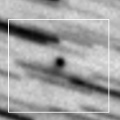
|
Now it is 14.6 mag (Feb. 28, Thomas Lehmann). It is expected to brighten up to 11 mag in summer. In the Northern Hemisphere, it stays observable in good condition until June when it brightens up to 11 mag. But it is not observable after the high light. In the Souther Hemisphere, it is not observable until October.
Date(TT) R.A. (2000) Decl. Delta r Elong. m1 Best Time(A, h)
Mar. 12 0 25.05 53 26.7 2.726 2.359 58 14.9 19:28 (139, 25)
Mar. 19 0 43.15 54 20.4 2.678 2.278 56 14.7 19:34 (142, 23)
|
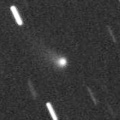
|
Now it is 14.3 mag (Mar. 2, Toshihiko Ikemura, Hirohisa Sato). It became brighter after the perihelion passage. It stays observable at 14-15 mag for a long time.
Date(TT) R.A. (2000) Decl. Delta r Elong. m1 Best Time(A, h)
Mar. 12 11 46.05 9 45.2 2.618 3.605 172 14.8 0:30 ( 0, 65)
Mar. 19 11 33.04 9 10.9 2.657 3.642 170 14.9 23:44 ( 0, 64)
|
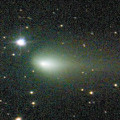
|
It brightened up to 10.6 mag in autumn (Oct. 10, Osamu Miyazaki). Now it is fading. It has already faded down to 13.7 mag (Feb. 26, Toshihiko Ikemura, Hirohisa Sato). It stays observable in good condition for a long time.
Date(TT) R.A. (2000) Decl. Delta r Elong. m1 Best Time(A, h)
Mar. 12 6 39.68 13 32.2 1.879 2.387 108 14.8 19:28 ( 5, 68)
Mar. 19 6 46.54 13 57.2 2.001 2.430 103 15.1 19:34 ( 22, 68)
|
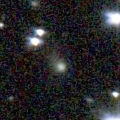
|
Now it is 15.2 mag (Mar. 2, Toshihiko Ikemura, Hirohisa Sato). It is expected to brighten up to 11 mag in 2023. In the Northern Hemisphere, it stays observable in good condition until November. But it becomes unobservable after that. In the Southern Hemisphere, it stays observable in good condition after this.
Date(TT) R.A. (2000) Decl. Delta r Elong. m1 Best Time(A, h)
Mar. 12 18 57.41 17 36.0 5.250 4.994 69 15.0 4:51 (284, 49)
Mar. 19 18 59.64 17 46.4 5.121 4.947 74 14.9 4:41 (287, 52)
|

|
Now it is 15.8 mag (Feb. 20, J. L. Virlichie, P. Traverse, H. Roy). It stays at 15-16 mag for a long time. In the Southern Hemisphere, it stays observable in excellent condition for a long time. In the Northern Hemiphere, it locates extremely low in spring.
Date(TT) R.A. (2000) Decl. Delta r Elong. m1 Best Time(A, h)
Mar. 12 17 19.83 -38 56.5 5.006 5.090 89 15.1 4:51 (346, 14)
Mar. 19 17 17.79 -40 8.6 4.897 5.101 96 15.0 4:41 (350, 14)
|
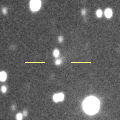
|
Now it is 15.3 mag (Mar. 3, Toshihiko Ikemura, Hirohisa Sato). It continues brightening even after the perihelion passage. It is observable at 15 mag in good condition for a while.
Date(TT) R.A. (2000) Decl. Delta r Elong. m1 Best Time(A, h)
Mar. 12 10 17.07 -13 33.4 1.474 2.414 155 15.2 22:57 ( 0, 42)
Mar. 19 10 17.23 -10 30.2 1.499 2.431 153 15.2 22:30 ( 0, 45)
|
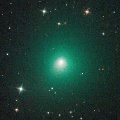
|
It brightened up to 9.5 mag in early summer in 2021 (June 27, Marco Goiato). Now it is fading. It has faded down to 12.7 mag in autumn (Nov. 22, Thomas Lehmann). In the Southern Hemisphere, it is appearing in the morning sky. In the Northern Hemisphere, it is not observable until June when the comet will fade down to 17 mag.
Date(TT) R.A. (2000) Decl. Delta r Elong. m1 Best Time(A, h)
Mar. 12 21 47.32 -31 17.8 4.184 3.435 36 15.6 4:51 (299,-13)
Mar. 19 21 57.73 -31 5.3 4.186 3.493 40 15.7 4:41 (300,-12)
|
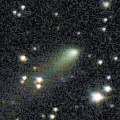
|
Now it is 16.2 mag (Mar. 3, Toshihiko Ikemura, Hirohisa Sato). It will be fading after this. In the Northern Hemisphere, it stays observable in good condition for a long time. It locates low in the Southern Hemisphere.
Date(TT) R.A. (2000) Decl. Delta r Elong. m1 Best Time(A, h)
Mar. 12 14 50.67 40 38.2 2.275 2.916 121 15.7 3:34 (180, 85)
Mar. 19 14 27.56 42 44.4 2.269 2.961 125 15.8 2:44 (180, 82)
|
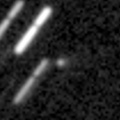
|
Now it is 16.9 mag (Mar. 2, K. Sarneczky). It is expected to brighten up to 11 mag from summer to autumn. It stays observable in good condition in the Southern Hemisphere. In the Northern Hemisphere, it becomes extremely low from August to September.
Date(TT) R.A. (2000) Decl. Delta r Elong. m1 Best Time(A, h)
Mar. 12 10 16.07 31 12.0 1.332 2.235 147 16.1 22:55 ( 0, 86)
Mar. 19 10 6.08 31 45.6 1.316 2.176 140 15.9 22:18 ( 0, 87)
|
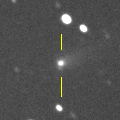
|
Now it is 16.0 mag (Mar. 9, Toshihiko Ikemura, Hirohisa Sato). It is bright as 14.8 mag visually (Mar. 1, Sandor Szabo). It will be fading after this, and it will be fainter than 18 mag in June.
Date(TT) R.A. (2000) Decl. Delta r Elong. m1 Best Time(A, h)
Mar. 12 11 38.39 12 20.9 1.271 2.257 170 15.9 0:22 ( 0, 67)
Mar. 19 11 33.76 13 1.4 1.301 2.282 166 16.0 23:45 ( 0, 68)
|
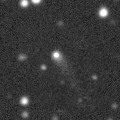
|
Now it is 15.9 mag (Mar. 6, Toshihiko Ikemura, Hirohisa Sato). It stays observable at 16 mag from 2021 to 2022.
Date(TT) R.A. (2000) Decl. Delta r Elong. m1 Best Time(A, h)
Mar. 12 16 20.23 24 55.7 4.495 4.874 106 16.1 4:51 (345, 80)
Mar. 19 16 20.67 26 50.2 4.446 4.889 110 16.1 4:36 ( 0, 82)
|
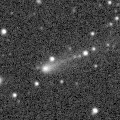
|
It brightened rapidly. Now it is 15.8 mag (Mar. 3, Toshihiko Ikemura, Hirohisa Sato). It stays observable in good condition for a while. But it will fade out rapidly after this, and it will be fainter than 18 mag in May.
Date(TT) R.A. (2000) Decl. Delta r Elong. m1 Best Time(A, h)
Mar. 12 7 51.53 13 14.8 1.899 2.609 125 16.2 20:32 ( 0, 68)
Mar. 19 7 53.08 13 2.4 1.987 2.623 119 16.4 20:06 ( 0, 68)
|

|
Now it is 19.2 mag (Feb. 28, Hidetaka Sato). It was expected to be observable at 16 mag in good condition in spring. But actually, it is fainter than predicted by 3 mag.
Date(TT) R.A. (2000) Decl. Delta r Elong. m1 Best Time(A, h)
Mar. 12 18 12.78 -32 28.1 1.266 1.445 78 16.4 4:51 (333, 16)
Mar. 19 18 37.69 -30 57.6 1.223 1.437 80 16.3 4:41 (331, 17)
|
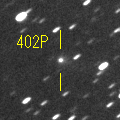
|
First return of a new periodic comet observed at 16 mag from 2003 to 2004. Now it is 16.3 mag (Feb. 26, Toshihiko Ikemura, Hirohisa Sato). It stays 16 mag until March, and it stays observable in excellent condition.
Date(TT) R.A. (2000) Decl. Delta r Elong. m1 Best Time(A, h)
Mar. 12 6 4.59 12 27.6 3.677 3.970 99 16.3 19:28 ( 26, 66)
Mar. 19 6 7.60 13 17.3 3.784 3.975 93 16.4 19:34 ( 42, 63)
|
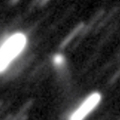
|
Now it is 16.3 mag (Mar. 3, Toshihiko Ikemura, Hirohisa Sato). It was observed at 15 mag in 2021. Now it is fading. It stays observable at 16-17 mag for a while in 2022.
Date(TT) R.A. (2000) Decl. Delta r Elong. m1 Best Time(A, h)
Mar. 12 18 40.15 8 27.8 5.303 5.094 72 16.6 4:51 (298, 46)
Mar. 19 18 42.77 9 53.8 5.227 5.111 77 16.6 4:41 (301, 50)
|
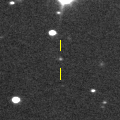
|
Now it is 17.0 mag (Mar. 3, Toshihiko Ikemura, Hirohisa Sato). It will brighten up to 11.5 mag in 2022 winter. It stays observable while the comet will be brightening slowly.
Date(TT) R.A. (2000) Decl. Delta r Elong. m1 Best Time(A, h)
Mar. 12 3 28.95 16 12.4 3.197 2.883 62 16.8 19:28 ( 80, 42)
Mar. 19 3 36.71 16 46.3 3.245 2.843 57 16.7 19:34 ( 85, 37)
|
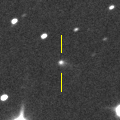
|
Now it is 16.9 mag (Mar. 1, M. Iozzi). It will brighten up to 14 mag in early 2023. It stays observable in good condition until spring.
Date(TT) R.A. (2000) Decl. Delta r Elong. m1 Best Time(A, h)
Mar. 12 4 29.07 8 57.5 4.673 4.540 76 16.7 19:28 ( 59, 49)
Mar. 19 4 33.19 9 37.8 4.733 4.500 70 16.7 19:34 ( 67, 44)
|

|
Brightened rapidly. Now it is 16.5 mag (Mar. 3, Toshihiko Ikemura, Hirohisa Sato). It becomes too low to observe in mid March in the Southern Hemisphere, or in mid April in the Northern Hemisphere.
Date(TT) R.A. (2000) Decl. Delta r Elong. m1 Best Time(A, h)
Mar. 12 2 55.72 13 23.8 4.354 3.861 54 16.7 19:28 ( 83, 34)
Mar. 19 3 3.33 13 47.3 4.443 3.869 49 16.8 19:34 ( 87, 29)
|

|
Now it is 17.2 mag (Jan. 18, J. Drummond). It brightened rapidly. It stays 17 mag for a long time from 2021 to 2022. In the Southern Hemisphere, it stays observable in good condition for a long time. In the Northern Hemisphere, it locates extremely low, and it is observable only until April.
Date(TT) R.A. (2000) Decl. Delta r Elong. m1 Best Time(A, h)
Mar. 12 6 56.42 -45 46.5 5.097 5.403 102 16.9 19:36 ( 0, 9)
Mar. 19 6 51.15 -45 11.2 5.155 5.412 99 16.9 19:34 ( 6, 10)
|
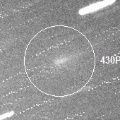
|
First return of a new periodic comet which brightened up to 17 mag in 2011. Now it is extremely faint as 20.4 mag (Feb. 4, J.-G. Bosch, F. Kugel, A. Klotz, J. Nicolas). It brightened up to 16.8 mag in October (Oct. 10, Ken-ichi Kadota), however, it has been fading after that.
Date(TT) R.A. (2000) Decl. Delta r Elong. m1 Best Time(A, h)
Mar. 12 15 30.48 -15 20.9 1.139 1.819 116 16.9 4:13 ( 0, 40)
Mar. 19 15 33.06 -15 42.4 1.109 1.852 123 16.9 3:49 ( 0, 39)
|
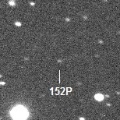
|
It will brighten up to 16 mag from spring to summer. It locates somewhat low in the Northern Hemisphere.
Date(TT) R.A. (2000) Decl. Delta r Elong. m1 Best Time(A, h)
Mar. 12 19 3.55 -21 57.7 3.373 3.111 66 17.0 4:51 (317, 20)
Mar. 19 19 12.31 -21 56.4 3.287 3.115 71 16.9 4:41 (319, 21)
|

|
Now it is 16.9 mag (Mar. 6, Toshihiko Ikemura, Hirohisa Sato). Fading slowly. In the Northern Hemisphere, it stays observable in good condition for a long time. In the Southern Hemisphere, it is not observable after this.
Date(TT) R.A. (2000) Decl. Delta r Elong. m1 Best Time(A, h)
Mar. 12 19 21.40 54 44.0 9.246 9.074 76 16.9 4:51 (224, 52)
Mar. 19 19 23.06 55 44.6 9.235 9.084 78 17.0 4:41 (221, 54)
|
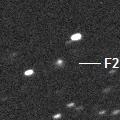
|
Now it is 16.9 mag (Feb. 28, Toshihiko Ikemura, Hirohisa Sato). It stays observable at 17-18 mag for a long time until 2024.
Date(TT) R.A. (2000) Decl. Delta r Elong. m1 Best Time(A, h)
Mar. 12 14 23.92 -1 47.4 8.111 8.847 135 17.0 3:07 ( 0, 53)
Mar. 19 14 20.23 -1 14.8 8.028 8.844 143 17.0 2:36 ( 0, 54)
|
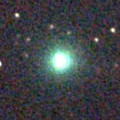
|
It brightened very rapidly, and brightened up to 8.9 mag (Sept. 11, Chris Wyatt). Now it is fading. It has already faded down to 18.5 mag (Feb. 11, J. L. Virlichie, P. Traverse, H. Roy). In the Southern Hemisphere, it stays observable after this while the comet will be fading. It is not observable after this in the Northern Hemisphere.
Date(TT) R.A. (2000) Decl. Delta r Elong. m1 Best Time(A, h)
Mar. 12 17 57.38 -55 59.1 2.662 2.723 82 17.0 4:51 (345, -4)
Mar. 19 17 59.83 -56 17.4 2.634 2.789 88 17.2 4:41 (347, -3)
|
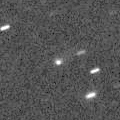
|
Now it is 16.5 mag (Feb. 28, Toshihiko Ikemura, Hirohisa Sato). It will be observable at 17 mag in good condition in spring.
Date(TT) R.A. (2000) Decl. Delta r Elong. m1 Best Time(A, h)
Mar. 12 13 40.36 -9 35.1 3.865 4.708 144 17.1 2:24 ( 0, 45)
Mar. 19 13 37.97 -9 25.1 3.805 4.707 151 17.1 1:54 ( 0, 45)
|
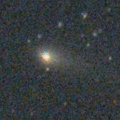
|
It brightened up to 13.1 mag in autumn (Oct. 28, Toshihiko Ikemura, Hirohisa Sato). Now it is fading. But it is still bright as 16.2 mag (Feb. 28, Toshihiko Ikemura, Hirohisa Sato). Sandor Szabo reported it is 15.0 mag visually on Mar. 1. It stays observable in good condition for a long time.
Date(TT) R.A. (2000) Decl. Delta r Elong. m1 Best Time(A, h)
Mar. 12 4 1.26 15 26.4 2.149 2.042 70 17.1 19:28 ( 73, 48)
Mar. 19 4 16.38 16 18.2 2.252 2.078 67 17.4 19:34 ( 78, 45)
|
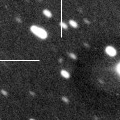
|
Now it is 16.9 mag (Mar. 8, Toshihiko Ikemura, Hirohisa Sato). It will brighten up to 13-14 mag from 2024 to 2025.
Date(TT) R.A. (2000) Decl. Delta r Elong. m1 Best Time(A, h)
Mar. 12 7 9.62 -29 33.8 7.909 8.304 110 17.2 19:50 ( 0, 25)
Mar. 19 7 9.35 -29 2.5 7.933 8.267 106 17.2 19:34 ( 3, 26)
|
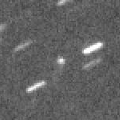
|
Now it is 17.1 mag (Mar. 4, A. Diepvens). It started fading before the perihelion passage. It was predicted to stay at 16 mag for a long time, but actually, it will be fainter than 18 mag in autumn. In the Northern Hemisphere, it stays observable in good condition for a long time. In the Southern Hemisphere, it is not observable until 2023.
Date(TT) R.A. (2000) Decl. Delta r Elong. m1 Best Time(A, h)
Mar. 12 23 43.79 75 37.2 3.837 3.779 79 17.2 19:28 (164, 30)
Mar. 19 23 50.81 75 12.3 3.888 3.773 75 17.2 4:41 (196, 29)
|
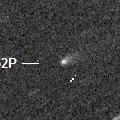
|
It brightened up to 16.4 mag from autumn to winter (Oct. 6, ATLAS-MLO, Mauna Loa). Now it is fading. It has already faded down to 18.0 mag (Feb. 28, Toshihiko Ikemura, Hirohisa Sato).
Date(TT) R.A. (2000) Decl. Delta r Elong. m1 Best Time(A, h)
Mar. 12 12 39.11 -13 2.6 1.338 2.280 155 17.4 1:23 ( 0, 42)
Mar. 19 12 32.55 -13 4.4 1.347 2.317 163 17.5 0:49 ( 0, 42)
|
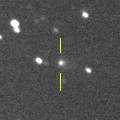
|
Now it is 17.8 mag (Feb. 25, Catalina Sky Survey). It continued brightening for a while even after the perihelion passage. It stays observable at 17 mag in good condition for a while.
Date(TT) R.A. (2000) Decl. Delta r Elong. m1 Best Time(A, h)
Mar. 12 4 35.78 -2 43.8 4.210 4.103 77 17.5 19:28 ( 46, 41)
Mar. 19 4 40.27 -1 42.2 4.322 4.121 71 17.5 19:34 ( 54, 38)
|

|
In the Northern Hemisphere, it is observable until April when it brightens up to 16 mag. It is not observable in the Southern Hemisphere.
Date(TT) R.A. (2000) Decl. Delta r Elong. m1 Best Time(A, h)
Mar. 12 2 25.50 18 18.0 1.796 1.368 49 17.6 19:28 ( 92, 30)
Mar. 19 2 35.38 18 16.5 1.785 1.277 44 17.5 19:34 ( 95, 25)
|
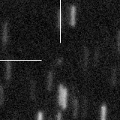
|
Now it is 17.6 mag (Mar. 4, A. Diepvens). It is expected to brighten up to 12 mag from winter to summer in 2023. In the Northern Hemisphere, it stays observable in good condition until 2023 spring. In the Southern Hemisphere, it is not observable until summer.
Date(TT) R.A. (2000) Decl. Delta r Elong. m1 Best Time(A, h)
Mar. 12 2 2.76 44 35.6 5.322 4.891 59 17.5 19:28 (123, 36)
Mar. 19 2 9.63 43 58.8 5.347 4.832 54 17.5 19:34 (124, 32)
|
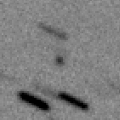
|
Now it is 17.8 mag (Feb. 27, Toshihiko Ikemura, Hirohisa Sato). It is observable at 17 mag from November to March. It is observable in good condition in the Northern Hemisphere, but it locates low in the Southern Hemisphere.
Date(TT) R.A. (2000) Decl. Delta r Elong. m1 Best Time(A, h)
Mar. 12 5 43.58 32 19.5 2.161 2.461 95 17.6 19:28 ( 83, 77)
Mar. 19 5 52.32 32 35.0 2.242 2.458 90 17.7 19:34 ( 89, 72)
|

|
Now it is 17.8 mag (Mar. 2, Toshihiko Ikemura, Hirohisa Sato). In the Northern Hemisphere, it stays observable for a long time while it is getting fainter slowly. It locates extremely low in the Southern Hemisphere.
Date(TT) R.A. (2000) Decl. Delta r Elong. m1 Best Time(A, h)
Mar. 12 14 42.26 46 11.3 7.388 7.932 120 17.6 3:25 (180, 79)
Mar. 19 14 38.18 46 35.8 7.411 7.979 121 17.7 2:54 (180, 79)
|
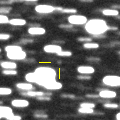
|
Now it is 17.2 mag (Mar. 8, Toshihiko Ikemura, Hirohisa Sato). It will brighten up to 15-16 mag in 2023. Cometary activity was detected by Cristovao Jacques on Dec. 12, and by Luca Buzzi and Andrea Aletti on Feb. 23.
Date(TT) R.A. (2000) Decl. Delta r Elong. m1 Best Time(A, h)
Mar. 12 6 33.77 -19 17.1 4.817 5.155 104 17.7 19:28 ( 4, 36)
Mar. 19 6 29.00 -18 17.5 4.869 5.109 98 17.7 19:34 ( 15, 35)
|

|
Now it is 17.9 mag (Mar. 5, E. Bryssinck). It stays 17-18 mag for a long time from 2021 to 2022. It is observable in excellent condition in the Northern Hemisphere, In the Southern Hemisphere, it is not observable until June.
Date(TT) R.A. (2000) Decl. Delta r Elong. m1 Best Time(A, h)
Mar. 12 2 36.98 26 43.6 5.867 5.357 54 17.7 19:28 (100, 37)
Mar. 19 2 37.25 26 36.7 5.969 5.356 48 17.7 19:34 (103, 30)
|
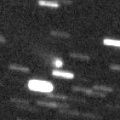
|
Now it is 17.1 mag (Feb. 28, Hidetaka Sato). It was observed at 16 mag from 2020 to 2021. Now it is fading. It will be fainter than 18 mag in spring.
Date(TT) R.A. (2000) Decl. Delta r Elong. m1 Best Time(A, h)
Mar. 12 15 23.82 -40 20.7 5.594 6.015 110 17.7 4:07 ( 0, 15)
Mar. 19 15 17.64 -40 56.7 5.521 6.048 117 17.7 3:34 ( 0, 14)
|
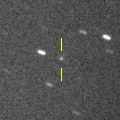
|
Now it is 17.4 mag (Mar. 3, Toshihiko Ikemura, Hirohisa Sato). It will brighten up to 16 mag in 2023. In the Southern Hemisphere, it stays observable in good condition for a long time. In the Northern Hemisphere, it is observable only until May.
Date(TT) R.A. (2000) Decl. Delta r Elong. m1 Best Time(A, h)
Mar. 12 10 2.03 -16 9.8 3.594 4.490 151 17.8 22:41 ( 0, 39)
Mar. 19 9 56.43 -16 18.9 3.583 4.448 146 17.8 22:08 ( 0, 39)
|
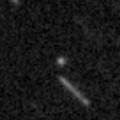
|
First return of a new periodic comet which brightened up to 16.5 mag in 1997. Now it is 17.7 mag (Feb. 27, Toshihiko Ikemura, Hirohisa Sato). It was fainter than originally predicted at the recovery, but it brightened very rapidly. It is observable in good condition from January to March.
Date(TT) R.A. (2000) Decl. Delta r Elong. m1 Best Time(A, h)
Mar. 12 8 25.17 20 55.6 1.259 2.065 132 17.8 21:06 ( 0, 76)
Mar. 19 8 27.86 19 38.4 1.306 2.059 126 17.8 20:41 ( 0, 74)
|
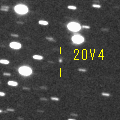
|
Now it is 17.6 mag (Feb. 20, ATLAS-MLO, Mauna Loa). It will be fainter than 18 mag soon.
Date(TT) R.A. (2000) Decl. Delta r Elong. m1 Best Time(A, h)
Mar. 12 7 37.45 5 29.3 4.683 5.286 122 17.8 20:18 ( 0, 60)
Mar. 19 7 37.65 5 49.6 4.780 5.294 116 17.9 19:50 ( 0, 61)
|
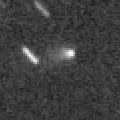
|
Now it is 17.1 mag (Feb. 23, Thomas Lehmann). It was expected to brighten up to 15.5 mag in winter. But actually, it is fading even before the perihelion passage. In the Northern Hemisphere, it stays observable in good condition for a long time. It is not observable at all in the Southern Hemisphere.
Date(TT) R.A. (2000) Decl. Delta r Elong. m1 Best Time(A, h)
Mar. 12 6 18.40 74 36.0 2.682 2.968 96 17.9 19:28 (177, 51)
Mar. 19 6 23.72 70 50.2 2.750 2.978 93 18.0 19:34 (172, 54)
|
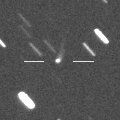
|
Now it is 18.2 mag (Mar. 6, ATLAS Chile, Rio Hurtado). In the Southern Hemisphere, it stays observable for a long time. In the Northern Hemisphere, it is observable in low sky in spring.
Date(TT) R.A. (2000) Decl. Delta r Elong. m1 Best Time(A, h)
Mar. 12 10 6.23 -46 17.9 3.520 4.194 127 18.5 22:45 ( 0, 9)
Mar. 19 9 57.69 -44 5.1 3.555 4.245 128 18.6 22:09 ( 0, 11)
|
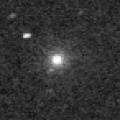
|
Now it is 18.7 mag (Feb. 13, Giuseppe Pappa). It was observed at 9-10 mag from late July to early August. Although it had been unobservable for a long time, it is appearing in the morning sky now.
Date(TT) R.A. (2000) Decl. Delta r Elong. m1 Best Time(A, h)
Mar. 12 16 42.98 -30 15.4 2.996 3.281 97 19.6 4:51 (352, 24)
Mar. 19 16 42.01 -30 54.5 2.969 3.362 104 19.8 4:41 (356, 24)
|
|
![]()
 C/2021 P4 ( ATLAS )
C/2021 P4 ( ATLAS ) C/2020 M5 ( ATLAS )
C/2020 M5 ( ATLAS ) 4P/Faye
4P/Faye C/2020 K1 ( PanSTARRS )
C/2020 K1 ( PanSTARRS ) C/2018 U1 ( Lemmon )
C/2018 U1 ( Lemmon ) C/2021 U5 ( Catalina )
C/2021 U5 ( Catalina ) C/2020 T2 ( Palomar )
C/2020 T2 ( Palomar ) C/2020 PV6 ( PanSTARRS )
C/2020 PV6 ( PanSTARRS ) 73P/Schwassmann-Wachmann 3
73P/Schwassmann-Wachmann 3 70P/Kojima
70P/Kojima C/2020 H6 ( ATLAS )
C/2020 H6 ( ATLAS ) 110P/Hartley 3
110P/Hartley 3 325P/Yang-Gao
325P/Yang-Gao 402P/2020 Q3 ( LINEAR )
402P/2020 Q3 ( LINEAR ) C/2020 O2 ( Amaral )
C/2020 O2 ( Amaral ) 81P/Wild 2
81P/Wild 2 C/2020 S4 ( PanSTARRS )
C/2020 S4 ( PanSTARRS ) P/2021 N2 ( Fuls )
P/2021 N2 ( Fuls ) C/2020 F7 ( Lemmon )
C/2020 F7 ( Lemmon ) 430P/2021 Q2 ( Scotti )
430P/2021 Q2 ( Scotti ) 152P/Helin-Lawrence
152P/Helin-Lawrence C/2019 O3 ( Palomar )
C/2019 O3 ( Palomar ) C/2020 F2 ( ATLAS )
C/2020 F2 ( ATLAS ) 8P/Tuttle
8P/Tuttle 99P/Kowal 1
99P/Kowal 1 132P/Helin-Roman-Alu 2
132P/Helin-Roman-Alu 2 C/2021 G2 ( ATLAS )
C/2021 G2 ( ATLAS ) C/2020 U5 ( PanSTARRS )
C/2020 U5 ( PanSTARRS ) 52P/Harrington-Abell
52P/Harrington-Abell 254P/McNaught
254P/McNaught (3200) Phaethon
(3200) Phaethon C/2021 Y1 ( ATLAS )
C/2021 Y1 ( ATLAS ) 274P/Tombaugh-Tenagra
274P/Tombaugh-Tenagra C/2018 N2 ( ASASSN )
C/2018 N2 ( ASASSN ) A/2021 X1
A/2021 X1 C/2020 U4 ( PanSTARRS )
C/2020 U4 ( PanSTARRS ) C/2017 Y2 ( PanSTARRS )
C/2017 Y2 ( PanSTARRS ) C/2021 C5 ( PanSTARRS )
C/2021 C5 ( PanSTARRS ) 440P/2021 W2 ( Kobayashi )
440P/2021 W2 ( Kobayashi ) P/2020 V4 ( Rankin )
P/2020 V4 ( Rankin ) C/2021 D2 ( ZTF )
C/2021 D2 ( ZTF ) C/2019 T2 ( Lemmon )
C/2019 T2 ( Lemmon ) C/2021 O1 ( Nishimura )
C/2021 O1 ( Nishimura )![]()




























































